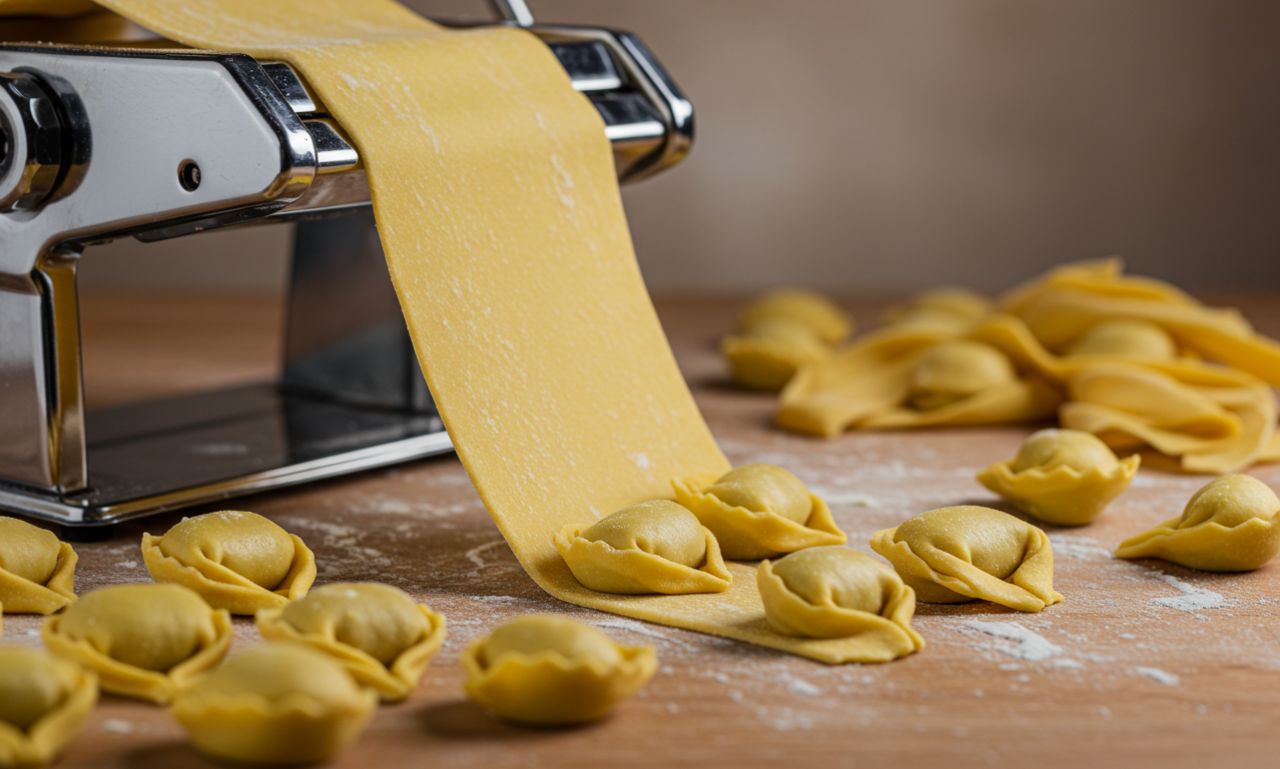If you’re a fan of traditional Italian cuisine, you’ve probably heard of tortellini—those delicious, ring-shaped pasta parcels filled with meat, cheese, or vegetables. Making tortellini by hand is an art form, but it’s also a time-consuming and intricate process. That’s where the tortellinatrice comes in.
A tortellinatrice is a specialized pasta machine designed to automate or semi-automate the production of tortellini, whether in a commercial pasta factory or a high-end restaurant. It ensures uniform size, perfect sealing, and rapid production, helping both professionals and passionate home cooks save time while preserving authenticity.
Origins of the Tortellinatrice
The name tortellinatrice comes from the Italian words “tortellini” (the pasta) and “-atrice”, a suffix used to describe a machine or tool that performs a specific function.
These machines originated in Emilia-Romagna, the Italian region where tortellini is a culinary staple. As demand grew for traditional pasta in both local shops and international markets, pasta makers began to innovate ways to speed up production without sacrificing quality.
How a Tortellinatrice Works
A tortellinatrice replicates the movements of hand-folding tortellini using precision mechanics and molds. Depending on the type and complexity of the machine, it can perform:
1. Sheeting the Dough
The machine rolls out pasta sheets to the desired thinness, ensuring uniform thickness.
2. Filling
A filling system deposits a precise amount of filling onto each pasta square or circle.
3. Folding and Shaping
Mechanical arms or molds fold the dough and seal it into the classic tortellini shape, often in one fluid motion.
Some tortellinatrici (plural) are fully automatic, while others are semi-automatic, requiring some manual feeding or folding.
Types of Tortellinatrici
There are different types of tortellinatrici depending on usage:Commercial Tortellinatrice
-
Built for high-output pasta factories
-
Can produce thousands of tortellini per hour
-
Stainless steel construction, programmable settings
-
Integrated cleaning systems
Restaurant-Grade Tortellinatrice
-
Smaller footprint for countertop use
-
Ideal for artisan pasta shops and restaurants
-
Moderate production (hundreds per hour)
-
Adjustable sizes and filling options
Manual or Home Tortellinatrice
-
Compact, affordable models for home chefs
-
Requires manual feeding of dough and filling
-
Great for small batches and experimentation
-
Keeps the artisanal touch while reducing labor
Benefits of Using a Tortellinatrice
Time Efficiency
Making tortellini by hand can take hours. A tortellinatrice speeds up the process dramatically, especially useful in busy kitchens.
Consistent Quality
Uniform size and sealing mean better presentation, even cooking, and reduced waste.
Versatility
Modern tortellinatrici allow for varied shapes, sizes, and fillings—including vegetarian, vegan, or gourmet options.
Scalability
As demand grows, businesses can scale up their production with high-output models.
Preservation of Tradition
While the machine modernizes the process, it keeps the traditional look and feel of the pasta intact.
Use Cases: Where Is a Tortellinatrice Used?
Home Kitchens
For passionate home chefs who make fresh pasta regularly, a manual tortellinatrice can be a game-changer.
Pasta Shops & Delis
Artisan producers use semi-automatic models to create large quantities of gourmet tortellini without hiring additional staff.
Restaurants
High-end Italian restaurants use these machines to ensure consistency during peak service hours while maintaining fresh pasta on the menu.
Pasta Factories
Large-scale operations rely on fully automatic systems for mass production and packaging.
Maintenance and Care
Proper care extends the life of your tortellinatrice:
-
Clean after each use, especially around the filling and folding mechanisms
-
Use food-safe lubricants for moving parts if required
-
Avoid abrasive cleaners—most parts are made of stainless steel or food-grade plastics
-
Store in a dry, safe place to prevent rust or damage
Many manufacturers offer replacement parts and service plans for long-term maintenance.
Final Thoughts: Is a Tortellinatrice Worth It?
If you’re serious about making fresh tortellini—whether at home or professionally—a tortellinatrice can be a smart and worthwhile investment. It helps reduce manual labor, improves consistency, and enhances productivity without losing the soul of Italian cuisine.
For businesses, it can mean faster service and higher profits. For home chefs, it’s a way to bring Italy into your kitchen, one perfect pasta parcel at a time.

